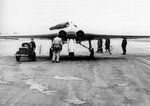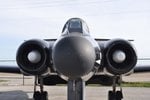parsifal
Colonel
Then why did German Asdic fail to deliver any outstanding results of any note?British sonar was not better and an operational advantage in radar did not develop till early 1943 and then only in certain areas.
I would say this as a qualifier to my own argument. Asdic even today is reliant upon the expertise of the operator, and also on the absolute necessity to work as a team.
Both sides lacked these critical abilities at the beginning, and it was the allies who developed the tactics needed to make the available technologies work. However, if as you say the Germans had superior sonar in 1939, then there would have been higher ratio of sinkings by the germans. It never happened, whereas, the allies, as they slowly solved their other issues, did dramatically increase their rate of sinkings (of Uboats).
If your claims were correct, one could expect a higher rate of sinkings of British submarines. There is no evidence of this ever occurring. Your explanation of why that might be is just plain wrong Im afraid, Says a person who learnt this as job.
German active sonar lacked a blind spot and had a beam that could locate the target in 3 dimensions. The low losses of british subs relates to their different use.
In what way? British submarines by the end of 1940 had sunk crippling losses of german controlled shipping. German supplied sonar for her major maritime partners also never delivered much in terms of results. You need to back this claim up, but i can tell you, categorically, that it is a baseless claim.
According to The Defeat of the German U-boats: The Battle of the Atlantic By David Syrett, "From March (1941) the allies began to pull ahead of the Uboats technologically as new electronics and tactics began to render increasingly unworkable the tactics of the surfaced attacks from withiin the convoy. Two electronic devices , HF/DF and radar rendered Uboat surfaced attacks unworkable, though they would continue for some time in other parts of the battle front. Once the escorts were fitted with radar , which occurred gradually from March 1941 on) Uboats found it nearly impossible toi emply their favourite tactics as successfully as they had. Under good conditions it was sometimes possible to detect periscopes with allied radar......"The microwave radar you so proudly speak of was not deployed on British submarines till the dying days of the war.
For instance the Type 291W radar of the T class submarine operated at 1.4m (twice the wavelength of seetakt). A microwave set the type 267W was not introduced on Royal Navy subs until the very end of the war though the US subs hand something a little earlier.
Here is the truth about submarine radar. Submariners were scared to use it and rightfully so since both side had detectors. The only folks who dared were the Americans with 3cm radars at the end of the war with the Japanese as the Japanese seemed to lack detractors, their own 10cm radar could detect the US 9cm radar but not 3cm.
The German sub radar was
1942 Seetakt FuMO 29, forward pointing phased array for detecting targets ahead
1943(early) Seetakt FuMo 30, rotating antenna for all round scanning, retracted pneumatically.
Equipment - Radar of German U-Boats
View attachment 305689
Above: U-643 (type VIIC) showing her FuMO 30 antenna. On the port side of the conning tower you can see the
UAK symbol given to the boats built in the Blohm Voss yard)
1944 Hohtenweil U FuMo 61 rotating 50cm radar with PPI, automatically retractable in conning tower
1944 (late) or early 1945 Berlin FuMo 84 microwave radar in sealed lenticular antenna could operate while under water.
1944 (late) or early 1945 FuMo 391 Lessing, single whip aerial could clear the area for 30km around the U-boat in a single undetectable pulse prior to surfacing.
1945 a automatic trscking microwave anti aircraft radar was tested called ballspeil on a U-boat.
All this yielded what for the Uboats. Im not making any claims from a technology point of view. My claims are made purely on observed results? What result can all this technology you are quoting actually deliver for the Uboats.....ah nothing.....
Nope. Maybe later in the war, but at the beginning, 1939 to 1941, there were, on average a greater number of British Boats operating against the germans than German boats operating against the British.In terms of the low number of British submarine losses, this is due to their lower number and different employment
In 1940, the average Uboat availability in the Atlantic was somehere between 10-12 boats per month, whilst for the allies it was 15-18. Not only were there British Boats to contend with. From September we see added to the allied OB the Polish, then the Norwegian, then the Dutch Navies. The French operated 2-3 full flotillas of boats in the North Sea and the Kattegat. Some of which remained in British service after the French surrender. In terms of new construction, British and German construction through to the end of 1940 were almost identical. After 1940, German construction slowly began to pull ahead, but their loss rates also skyrocketed, whilst british losses sharank to virtually nothing. .
1 German U-boats had to operate on the surface a high percentage of the time. The indiscretion ratio, the ratio between time on the surface recharging and that underwater on electric power was very high. This was because of the high speed required to approach a convoy.
Actually this relates to wolfpack tactics and with one exception, these werent employed until September 1940. Until then, Uboats concentrated on ambush attacks on independant sailings. By contrast, Allied subs remained bound by the stop and search policies until March 1940. Only then did they finally adopt an unrestricted attack policy, and then only against german flagged shipping. Until after June 1940, most British attacks were done on the surface, because ROE limits prevented them from doing otherwise.
Moreover, after slaughter of early April 1940, virtually all German shipping travelled in heavily defended convoys. Many allied and neutral flagged shipping remained independant sailings until September. After that virtually all shipping, including neutral shipping had to be convoyed because in August '40 the germans declared that all ships in all zones would be sunk on sight.
There was greater risk for the Allied subs operating until June 1940 than for the Germans. Even after this date, the threat remained higher, as the ratio of escorts in the German convoys remained very high, and much of the shipping lanes were fully protected by the Norwegian Leads, backed up by defensive mines .
2 British submarine was used for ambushes in coastal shipping, reconnaissance. For instance a T class submarine could charge its batteries as fast as possible, in say an hour and a half, and then spend the next 2-3 days submerged cruising at say 2 knots.
Ah no, British submarines did not operate that way early in the war. They would detect a convoy and chase it in the same way as the Germans had to, except that the British subs tended to do it submerged. The Royal Navy type "T" submarine had an underwater navigation speed of up to 16 knots, but at that speed an endurance of less than hour. At 2 knots it had a maximum endurance of 40 hours. At 2 knots the chances of achieving a firing solution against a 10 knot convoy was virtually zero. Recharge time was about 12-14 hrs.
Plus all this is irrelevant to the fact that German escort densities were far higher than for the Brit convoys. Typically in 1940 a convoy in the western approaches (the main killing field) with 45 ships would have 2 DDs and 2-3 corvettes as escort. SC-7 for example, in October, had 4 escorts defending 50 ships. By comparison the typical attacks against the german convoys in the Kattegat were 10-12 escorts for a 3 or 4 ship convoy....


